Reduction gearbox wear
Discussion
I'm unsure whether this is the correct place to post this as transmission problems are also fairly common in ICE applications. However it would seem that the power delivery of electric motors especially when applied to the 'cheaper' end of the market is capable of eating final drives for breakfast if (big assumption) continually on the receiving end of a leaden right foot - or regularly booted from cold before splash fed gear oil has had a chance to be evenly distributed.
I post this only as a heads up/discussion point because I've experienced no problems with our 2022 Kona, hardly surprising with only 13K covered so far - all in eco mode as the car is more than quick enough in day to day driving.
To mitigate potential issues I've changed the reduction gear oil 3 times so far, and as it's relatively inexpensive for Redline ester based 70/75W synthetic, will do so on a regular basis yet to be determined. I'll leave it for a further 10K this time.
There have been a number of instances of reduction gear wear/noise that I at first thought was a problem restricted to pre 2024 model years of the Kona/Niro/Soul but on further googling (and youtubing) was also a problem for Tesla, Nissan and others.
The Kona reduction gear internals, the red arrow points to the oem magnet pocket .

On the left, the second image shows the fill and drain holes in the casing.
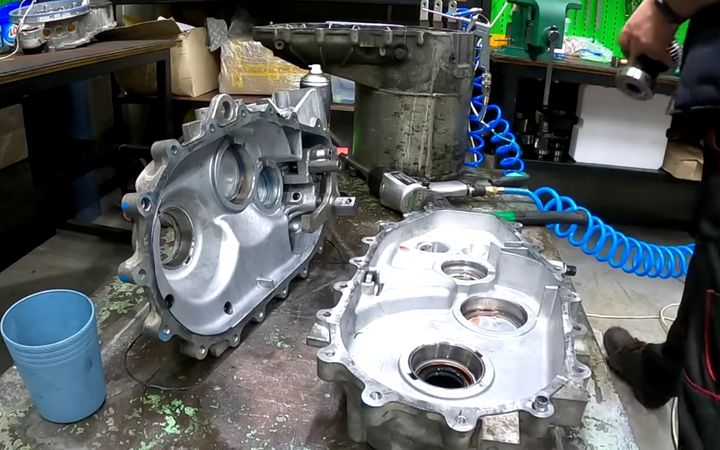
A Nissan Leaf differential, as it should be, and chewed to bits.
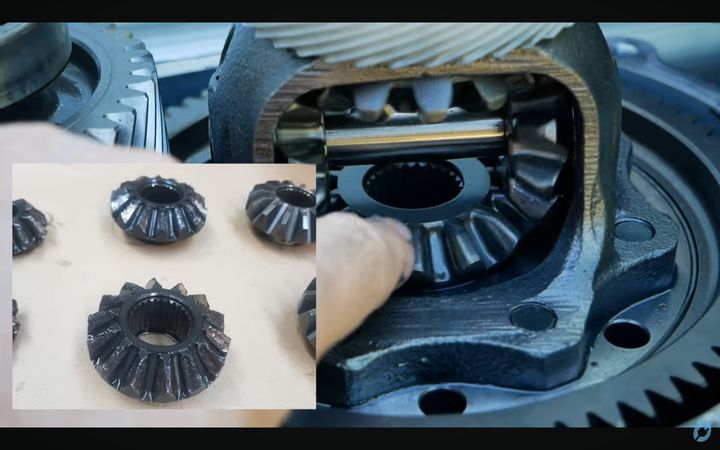
The Tesla solutions - oil filter, pump and cooler.
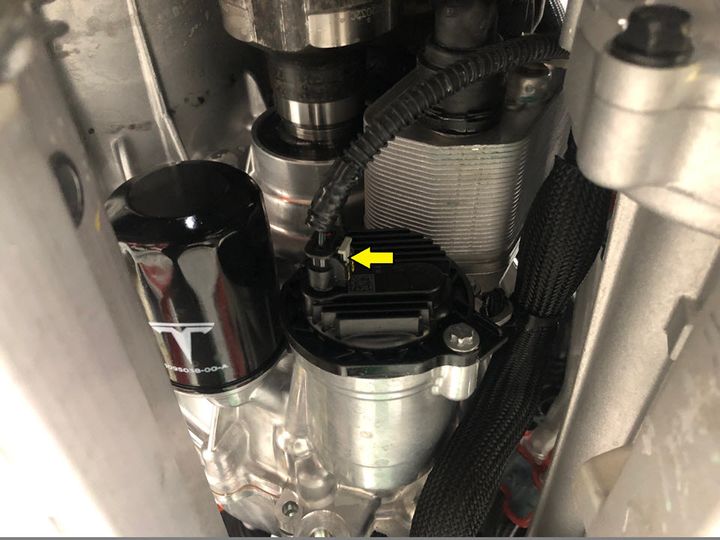
The reduction gear takes 1.1L to refill although the best I've managed to get in before it overflows from the fill plug is 1040ml. I assume the difference is what remains in the box after draining.
I bought a 550ml syringe to fill the box but in the end went with my usual method of funnel (cut from a 1L oil container) and length of flexible silicone tubing. Fed through from above so that its gripped by various components and can't easily move.
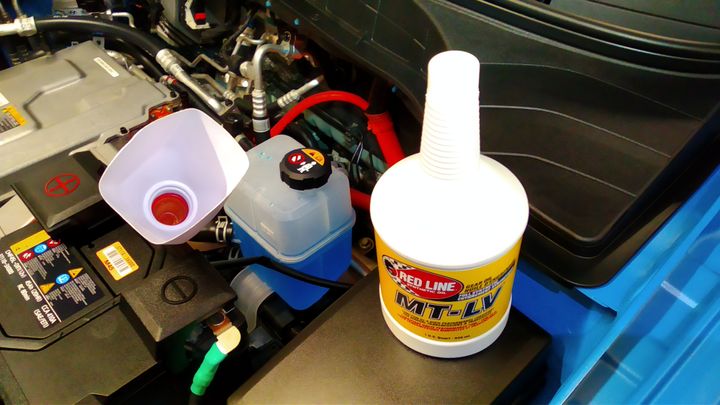
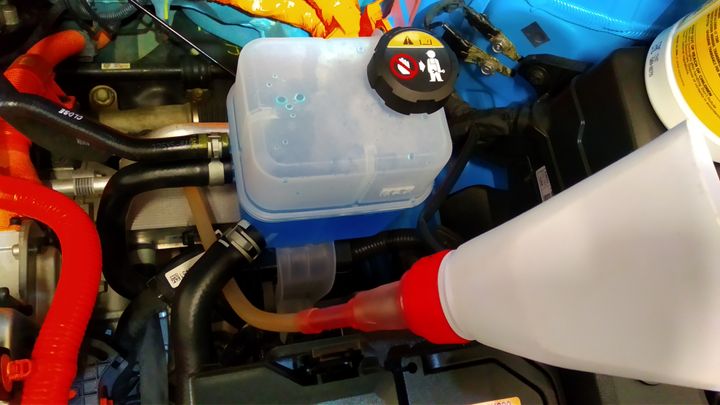
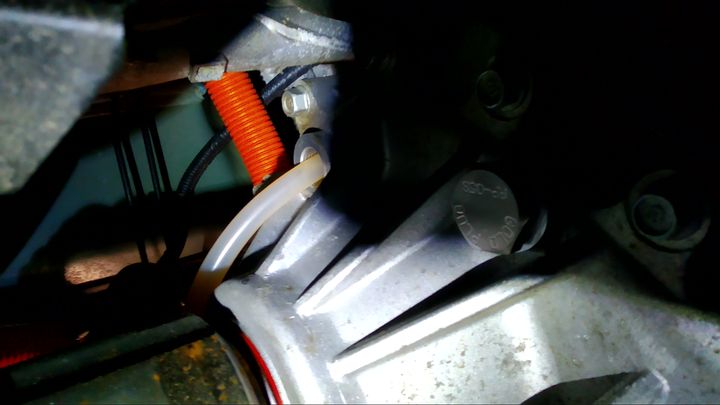
First change at 5365 miles.
Fresh in comparison to used gear oil together with the replacement neodymium magnet, stainless steel drain and fill 'Gold' plug - I replaced both oem plugs. There is an internal magnet trapped within the assembled gearbox casings but obviously this cannot be cleaned of swarf at any point and is almost guaranteed to become overloaded in time just with normal wearing in debris.
The oil looks really black but there was no swarf or even any detectable metal particles. Oil analysis done by others has shown high levels of aluminium. Some speculated that this may be a result of the oem magnet which is loosely trapped in the gearbox casing moving around. However stripdown of affected units shows no such abrasion or wear.
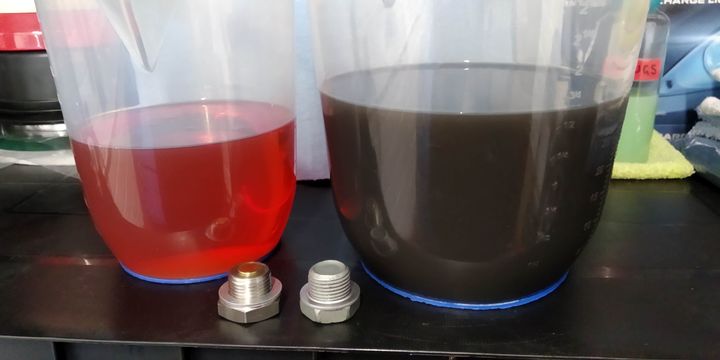
Second change at 6995 miles to flush any residual contamination from the original oil.
The oil in the jug looks just as black but was obviously less so as it flowed out. Not much in the way of metallic contamination on either plug so there was possibly little point in also replacing the fill plug.

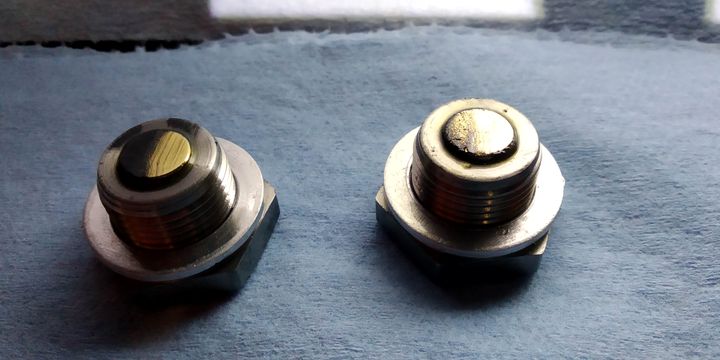
Third change at 12506 miles.
Again the oil looks black but looked significantly cleaner as it was draining, still had a red tinge to it. 20ml drawn into a syringe shows a more realistic condition but still not as good as the ATF from my Prius that looked exactly the same as new ATF at 30K. No swarf on the plugs, none at least that could be felt between my fingers.
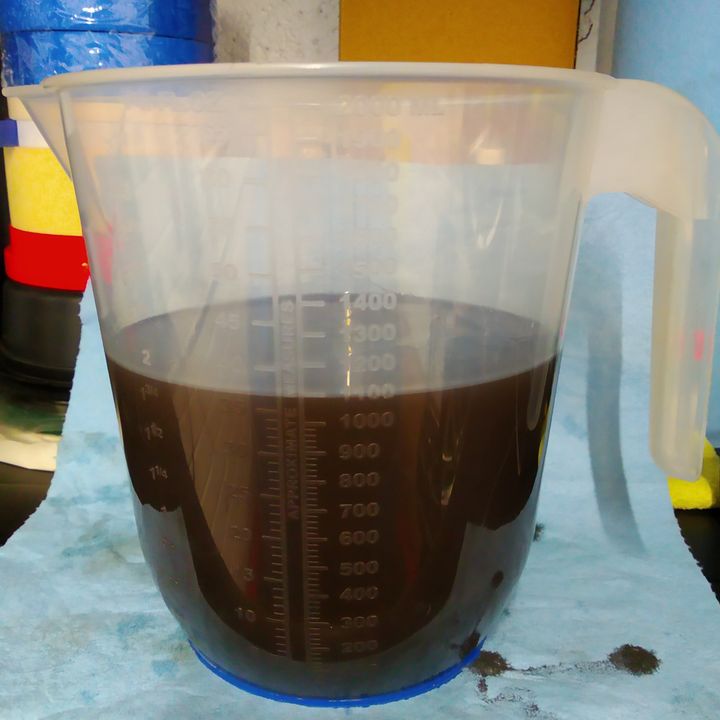
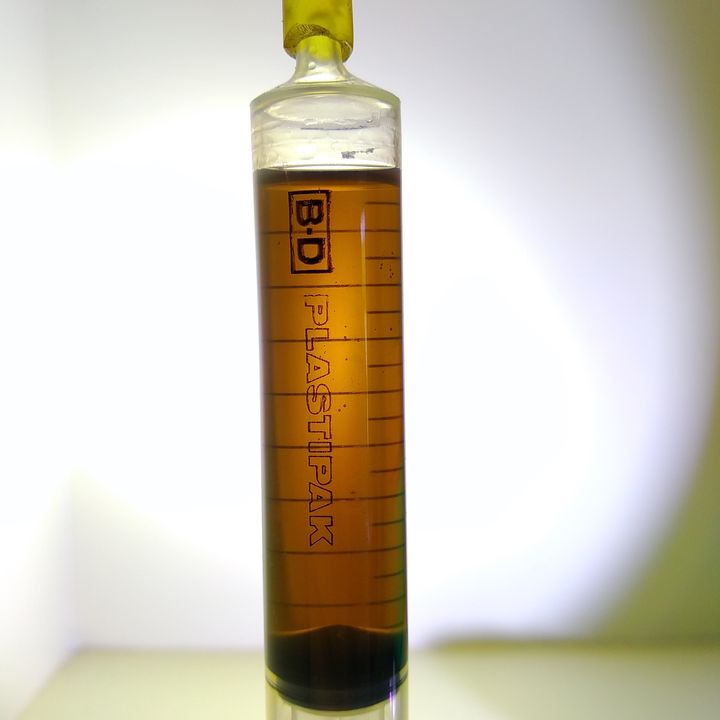
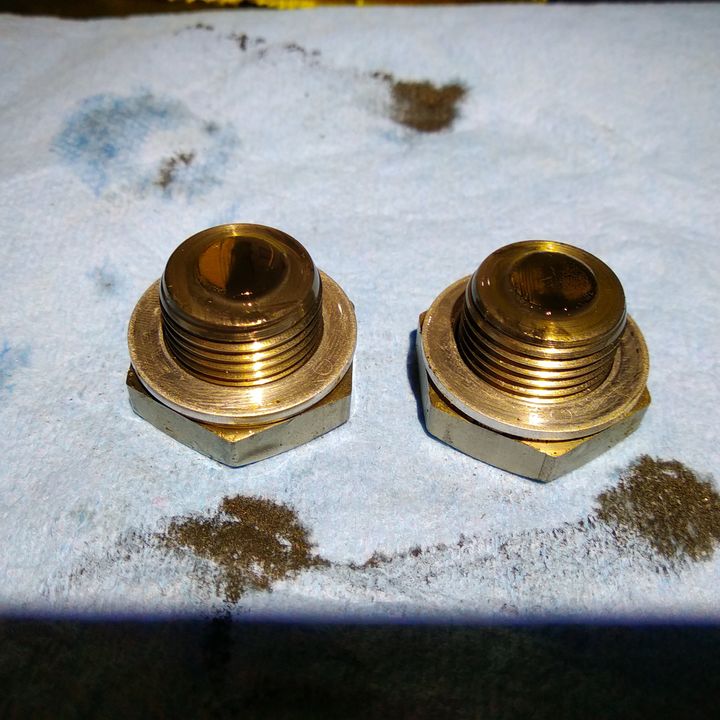
Still the most obviously contaminated transmission fluid I've seen in any of my cars so far. Of particular note is the fact that the latest version of the Kona now has 188lb-ft compared to mine at 291lb-ft. Is this to protect the transmission?
I post this only as a heads up/discussion point because I've experienced no problems with our 2022 Kona, hardly surprising with only 13K covered so far - all in eco mode as the car is more than quick enough in day to day driving.
To mitigate potential issues I've changed the reduction gear oil 3 times so far, and as it's relatively inexpensive for Redline ester based 70/75W synthetic, will do so on a regular basis yet to be determined. I'll leave it for a further 10K this time.
There have been a number of instances of reduction gear wear/noise that I at first thought was a problem restricted to pre 2024 model years of the Kona/Niro/Soul but on further googling (and youtubing) was also a problem for Tesla, Nissan and others.
The Kona reduction gear internals, the red arrow points to the oem magnet pocket .
On the left, the second image shows the fill and drain holes in the casing.
A Nissan Leaf differential, as it should be, and chewed to bits.
The Tesla solutions - oil filter, pump and cooler.
The reduction gear takes 1.1L to refill although the best I've managed to get in before it overflows from the fill plug is 1040ml. I assume the difference is what remains in the box after draining.
I bought a 550ml syringe to fill the box but in the end went with my usual method of funnel (cut from a 1L oil container) and length of flexible silicone tubing. Fed through from above so that its gripped by various components and can't easily move.
First change at 5365 miles.
Fresh in comparison to used gear oil together with the replacement neodymium magnet, stainless steel drain and fill 'Gold' plug - I replaced both oem plugs. There is an internal magnet trapped within the assembled gearbox casings but obviously this cannot be cleaned of swarf at any point and is almost guaranteed to become overloaded in time just with normal wearing in debris.
The oil looks really black but there was no swarf or even any detectable metal particles. Oil analysis done by others has shown high levels of aluminium. Some speculated that this may be a result of the oem magnet which is loosely trapped in the gearbox casing moving around. However stripdown of affected units shows no such abrasion or wear.
Second change at 6995 miles to flush any residual contamination from the original oil.
The oil in the jug looks just as black but was obviously less so as it flowed out. Not much in the way of metallic contamination on either plug so there was possibly little point in also replacing the fill plug.
Third change at 12506 miles.
Again the oil looks black but looked significantly cleaner as it was draining, still had a red tinge to it. 20ml drawn into a syringe shows a more realistic condition but still not as good as the ATF from my Prius that looked exactly the same as new ATF at 30K. No swarf on the plugs, none at least that could be felt between my fingers.
Still the most obviously contaminated transmission fluid I've seen in any of my cars so far. Of particular note is the fact that the latest version of the Kona now has 188lb-ft compared to mine at 291lb-ft. Is this to protect the transmission?
Jazoli said:
interesting but surely the car is under warranty for another 5 years? unless you are planning to keep it forever.
I keep cars for 10 years or more and have absolutely no confidence in dealers doing simple jobs properly let alone transmission replacements.Couldn't be bothered with the hassle either. I'm seriously considering replacing the low conductivity coolant myself when the time comes. I'd need a bi-directional diagnostic tool for that one though.
Other than mot's (just the test) or safety recalls, I haven't had work carried out at a garage since 1981.
That is all very curious.
An electric car should be easier on the gears, it's smooth torque not like lumpy impacts from a diesel engine?
As with any vehicle, the load on the gears is limited by what the tyres will do, and how hard you drive.
Of course, an EV is doing more 'engine braking' as in regen, is that significant?
Are we sure that the 'black' isn't some sort of moly-summat additive? The only vehicle I've owned with a reputation for eating the final drive, a moly additive was the thing to do in the late 80s.
Would it be worth sending a sample to an oil analysis place?
An electric car should be easier on the gears, it's smooth torque not like lumpy impacts from a diesel engine?
As with any vehicle, the load on the gears is limited by what the tyres will do, and how hard you drive.
Of course, an EV is doing more 'engine braking' as in regen, is that significant?
Are we sure that the 'black' isn't some sort of moly-summat additive? The only vehicle I've owned with a reputation for eating the final drive, a moly additive was the thing to do in the late 80s.
Would it be worth sending a sample to an oil analysis place?
As I understand it the Leaf reduction gear is 'sealed for life' as far as Nissan is concerned. I had ours changed at our local EV independent at about 80k and it was the sort of horrible grey colour you only ever want to see on other people's car threads.
I'm sure it would last the design life of the car with the original oil in it, but given the battery is still rock solid at 100k miles I'm having it changed at each major service, so about every 15k miles.
I'm sure it would last the design life of the car with the original oil in it, but given the battery is still rock solid at 100k miles I'm having it changed at each major service, so about every 15k miles.
OutInTheShed said:
That is all very curious.
An electric car should be easier on the gears, it's smooth torque not like lumpy impacts from a diesel engine?
As with any vehicle, the load on the gears is limited by what the tyres will do, and how hard you drive.
Of course, an EV is doing more 'engine braking' as in regen, is that significant?
Are we sure that the 'black' isn't some sort of moly-summat additive? The only vehicle I've owned with a reputation for eating the final drive, a moly additive was the thing to do in the late 80s.
Would it be worth sending a sample to an oil analysis place?
I'm wondering if it could be the full torque available from a standstill and owners making full use of it or itt could simply be gear train insufficiently robust for the job. An electric car should be easier on the gears, it's smooth torque not like lumpy impacts from a diesel engine?
As with any vehicle, the load on the gears is limited by what the tyres will do, and how hard you drive.
Of course, an EV is doing more 'engine braking' as in regen, is that significant?
Are we sure that the 'black' isn't some sort of moly-summat additive? The only vehicle I've owned with a reputation for eating the final drive, a moly additive was the thing to do in the late 80s.
Would it be worth sending a sample to an oil analysis place?
Quite a few of the failures seem to be from cars exposed to extremely cold Canadian winters.
Hyundai's MTF appears to be virtually clear (from what I've seen on the web) but could still have an molybdenum additive. Toyota's Prius engine oil did and it was virtually clear. In any case the failures are occurring with the original oil. Perhaps that's simply not up to the job.
Oil analyses have shown that iron is within normal levels but aluminium is high. Bearings spinning within the housing?
agent006 said:
As I understand it the Leaf reduction gear is 'sealed for life' as far as Nissan is concerned. I had ours changed at our local EV independent at about 80k and it was the sort of horrible grey colour you only ever want to see on other people's car threads.
I'm sure it would last the design life of the car with the original oil in it, but given the battery is still rock solid at 100k miles I'm having it changed at each major service, so about every 15k miles.
That horrible grey colour reminds me of outboard motor gearboxes, you can understand the oil going funny when the box is immersed in seawater.I'm sure it would last the design life of the car with the original oil in it, but given the battery is still rock solid at 100k miles I'm having it changed at each major service, so about every 15k miles.
The diff oil in my previous shed was changed at 150k miles and seemed a bit thin, not changed again, got rid at 195k miles with no diff problems.
5s Alive said:
Oil analyses have shown that iron is within normal levels but aluminium is high. Bearings spinning within the housing?
That is the only feasible source of aluminium in the oil other than from manufacturing residue. If the pockets are too large the outer races could fret under high loads, although I'd expect this to be endemic as a quality problem rather than a one-off.Caddyshack said:
A lot of the skyline gearboxes had a redline product called "shock proof" for reducing wear.
I wasn't aware of that one but having checked I can't determine if it's a GL4 or GL5 spec. I suspect from the additive package that it would be classified as a GL5 and as the Kona single speed reduction box has no synchro or brass bushings then it would be fine. Wouldn't like to risk it though. It also appears to be primarily recommended for motorsport applications.I did read that the GL4/5 additive packages create a black coating on gear teeth under pressure and heat that is subsequently mechanically peeled off and re-coated as gear teeth mesh under load. This presumably means that blackening of the oil is normal so only the presence of metallic swarf ought to be of concern.
hidetheelephants said:
5s Alive said:
Oil analyses have shown that iron is within normal levels but aluminium is high. Bearings spinning within the housing?
That is the only feasible source of aluminium in the oil other than from manufacturing residue. If the pockets are too large the outer races could fret under high loads, although I'd expect this to be endemic as a quality problem rather than a one-off.Buy one with a duff gearbox, another with a duff engine, mix and match the bits.
To get the casings apart, you had to use a hammer and a few bits of wood, because the bearings were a press fit in the aluminium cases.
Other bikes I've had apart, it was recommended to use a Loctite product to glue the bearings into the cases.
For a bearing to spin the outer race, there has to be something wrong though?
Also consider those helical gears will put end load on the bearings, and the casing may distort under load.
Those Leaf diff pinions look very small to me, but I can't claim to have seen all that many diffs in pieces.
OutInTheShed said:
Back when I was a poor student (in both senses!), I had a series of cheap Eastern Bloc motorbikes.
Buy one with a duff gearbox, another with a duff engine, mix and match the bits.
To get the casings apart, you had to use a hammer and a few bits of wood, because the bearings were a press fit in the aluminium cases.
Other bikes I've had apart, it was recommended to use a Loctite product to glue the bearings into the cases.
For a bearing to spin the outer race, there has to be something wrong though?
Also consider those helical gears will put end load on the bearings, and the casing may distort under load.
Those Leaf diff pinions look very small to me, but I can't claim to have seen all that many diffs in pieces.
I've seen from watching stripdown videos that the Kona bearings are barely an interference fit so that the casings are fairly easy to gently lever off. They also have steel shims at the casing ends that load onto the outer bearing race when bolted down.Buy one with a duff gearbox, another with a duff engine, mix and match the bits.
To get the casings apart, you had to use a hammer and a few bits of wood, because the bearings were a press fit in the aluminium cases.
Other bikes I've had apart, it was recommended to use a Loctite product to glue the bearings into the cases.
For a bearing to spin the outer race, there has to be something wrong though?
Also consider those helical gears will put end load on the bearings, and the casing may distort under load.
Those Leaf diff pinions look very small to me, but I can't claim to have seen all that many diffs in pieces.
The newer Hyundai/Kia boxes have considerably more strengthening ribs than before so distortion of the casing under heavy loads may have been an issue previously. The Leaf boxes that I've seen so far don't seem to have such prominent ribs, or as many.
The pinions do look fairly small, not much bigger than the ones in my daughter's first car, a 1.2L Panda. Pic for reference, unfortunately nothing to scale it by.
I made a huge error when replacing the driveshafts. I'd pulled the first one intending to secure the diff cage with a wooden dowel but got called in to the phone. Came back out and pulled the second. Yup, the cage rotated and dropped one of the gears into the casing. b
 d!
d! 
hidetheelephants said:
It does sound like bearing fit adhesive would be advisable.
I'd hope that Hyundai/Kia (or whoever produces the boxes) managed to work that one out after the early failures but some of the early boxes that were replaced under warranty failed again. This was then blamed on some cars having motor/box/chassis misalignment problems. Who knows where the real issue lies but so far those who changed the oil early, and regularly, for the Redline synthetic haven't had any problems, even at high mileages.The numbers of failed transmissions are relatively few however I decided to pre-empt possible failure and change the oil for what seems to be the best currently available. According to Hyundai any standard 70w GL4 is fine. Most of the failures appeared to be eary models and some unspecified changes were subsequently made.
Interestingly it seems that both the reduction gear and motors are now 'wet' in the new model Konas and Niros, in a similar design to Tesla with pumped lubrication and oil filter with 3 or 4 times greater oil capacity.
Unless you are routinely giving it full throttle I doubt there will be an issue but I do think given the splash lubrication that it would be sensible to drive gently until the oil gets a chance to be evenly distributed throughout the box - especially if the car has been sitting for a while.
Interestingly it seems that both the reduction gear and motors are now 'wet' in the new model Konas and Niros, in a similar design to Tesla with pumped lubrication and oil filter with 3 or 4 times greater oil capacity.
Unless you are routinely giving it full throttle I doubt there will be an issue but I do think given the splash lubrication that it would be sensible to drive gently until the oil gets a chance to be evenly distributed throughout the box - especially if the car has been sitting for a while.
5s Alive said:
Unless you are routinely giving it full throttle I doubt there will be an issue but I do think given the splash lubrication that it would be sensible to drive gently until the oil gets a chance to be evenly distributed throughout the box - especially if the car has been sitting for a while.
Do you think direction could affect the effectiveness of splash lubrication? I'm thinking of cars being reversed off drives every morning.Sheepshanks said:
Do you think direction could affect the effectiveness of splash lubrication? I'm thinking of cars being reversed off drives every morning.
The reduction gear casing is a pretty close fit, especially around the differential ring gear so I think this will splash the oil around fairly effectively when driven in either direction. However it still makes sense to keep torque at the driven wheels to a minimum for the first few minutes of driving. I imagine that for those owners who exit straight on to fast busy roads this would prove difficult.
The GL4 oil additive package is designed to have high adhesion and film strength so the gears should never actually be 'dry'. The Redline oil I've used is ester based and this is reported to have even higher affinity for metal and markedly better film strength than those that are not.
This was something I noticed about our Prius. The throttle pedal was quite unresponsive for a few minutes upon start up on cold winter mornings.
However the Prius also had a coolant recirculating loop through the first exhaust catalyst to speed engine warming and was definitely restricted for the first few minutes.
The engine would be running as normal but it felt like there was very little torque from the electric motor.
Not something I've noticed with the Kona but we've since moved house and now have a long 20mph zone to traverse before joining a main road and the first part of that is downhill. Ideal conditions for some light loading splash lubrication.
However the Prius also had a coolant recirculating loop through the first exhaust catalyst to speed engine warming and was definitely restricted for the first few minutes.
The engine would be running as normal but it felt like there was very little torque from the electric motor.
Not something I've noticed with the Kona but we've since moved house and now have a long 20mph zone to traverse before joining a main road and the first part of that is downhill. Ideal conditions for some light loading splash lubrication.
Gassing Station | EV and Alternative Fuels | Top of Page | What's New | My Stuff



